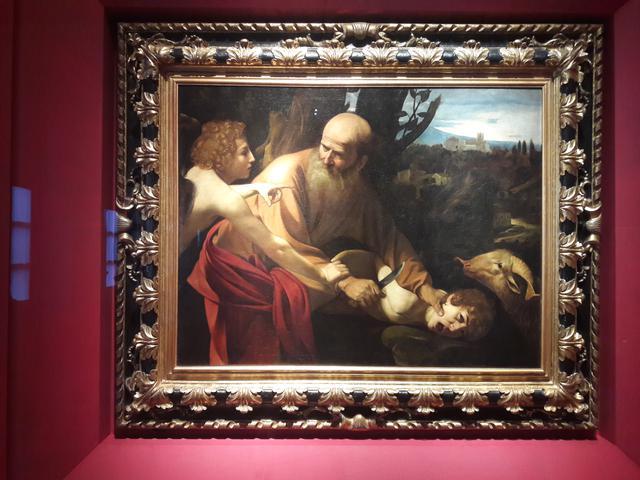Sacrifice of Isaac

The painting illustrates the Old Testament passage in which God commanded Abraham to sacrifice his only son, Isaac. Caravaggio faithfully describes the crucial moment of the dramatic story, when Abraham, at the very moment he is about to sacrifice Isaac, is blocked by an angel sent by the Lord. ""Don't lay a hand on the child," he said. "Don't do anything to him. Now I know that you fear God, because you have not withheld your son from me, your only son." God's messenger tells Abraham (Genesis 22, verse 12) pointing with his left hand to a ram to sacrifice. Caravaggio decided to humanize the figure of the angel, placing him next to Abraham as a solid presence that firmly grasps the old man's wrist. In the background there is a mountainous and Mediterranean landscape, with small roads and farm animals, and a small town. Critics have identified echoes of the style of the Caravaggio's training in the regions of Lombardy and Veneto. In the past, this work has also been subject to a symbolic interpretation according to which the building on the hill is a church with a baptistery, a reference to the future birth of the Catholic church, while that the light diffused on the background symbolizes the light of divine grace The sacrifice of young Isaac serves, therefore, to foreshadow the sacrifice of Christ. The biblical theme was certainly chosen by the illustrious client of the work, Maffeo Barberini, the influential cardinal and future pope Urban VIII. All critics have declared that this is an authentic Caravaggio, an attribution that is also confirmed by the payments made to the painter by Maffeo Barberini himself.
The painting was donated to the Uffizi in 1917, by John Fairfax Murray, who had purchased it as a work by Gherardo delle Notti, from a company that had purchased part of the possessions of the Colonna Sciarra family of Rome, late in the afternoon . 19th century.
© Tourblink